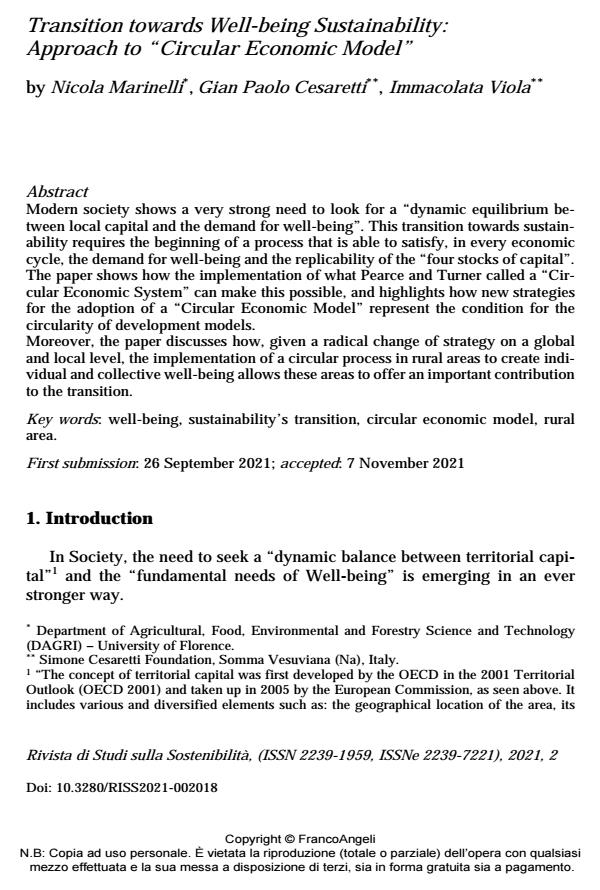Transition towards Well-being Sustainability:Approach to "Circular Economic Model"
Titolo Rivista RIVISTA DI STUDI SULLA SOSTENIBILITA'
Autori/Curatori Nicola Marinelli, Gian Paolo Cesaretti, Immacolata Viola
Anno di pubblicazione 2022 Fascicolo 2021/2
Lingua Inglese Numero pagine 20 P. 263-282 Dimensione file 200 KB
DOI 10.3280/RISS2021-002019
Il DOI è il codice a barre della proprietà intellettuale: per saperne di più
clicca qui
Qui sotto puoi vedere in anteprima la prima pagina di questo articolo.
Se questo articolo ti interessa, lo puoi acquistare (e scaricare in formato pdf) seguendo le facili indicazioni per acquistare il download credit. Acquista Download Credits per scaricare questo Articolo in formato PDF

FrancoAngeli è membro della Publishers International Linking Association, Inc (PILA)associazione indipendente e non profit per facilitare (attraverso i servizi tecnologici implementati da CrossRef.org) l’accesso degli studiosi ai contenuti digitali nelle pubblicazioni professionali e scientifiche
Modern society shows a very strong need to look for a "dynamic equilibrium be-tween local capital and the demand for well-being". This transition towards sus-tainability requires the beginning of a process that is able to satisfy, in every eco-nomic cycle, the demand for well-being and the replicability of the "four stocks of capital". The paper shows how the implementation of what Pearce and Turner called a "Circular Economic System" can make this possible, and highlights how new strat-egies for the adoption of a "Circular Economic Model" represent the condition for the circularity of development models. Moreover, the paper discusses how, given a radical change of strategy on a global and local level, the implementation of a circular process in rural areas to create in-dividual and collective well-being allows these areas to offer an important contri-bution to the transition.
Parole chiave:well-being, sustainability’s transition, circular economic model, rural area.
Nicola Marinelli, Gian Paolo Cesaretti, Immacolata Viola, Transition towards Well-being Sustainability:Approach to "Circular Economic Model" in "RIVISTA DI STUDI SULLA SOSTENIBILITA'" 2/2021, pp 263-282, DOI: 10.3280/RISS2021-002019